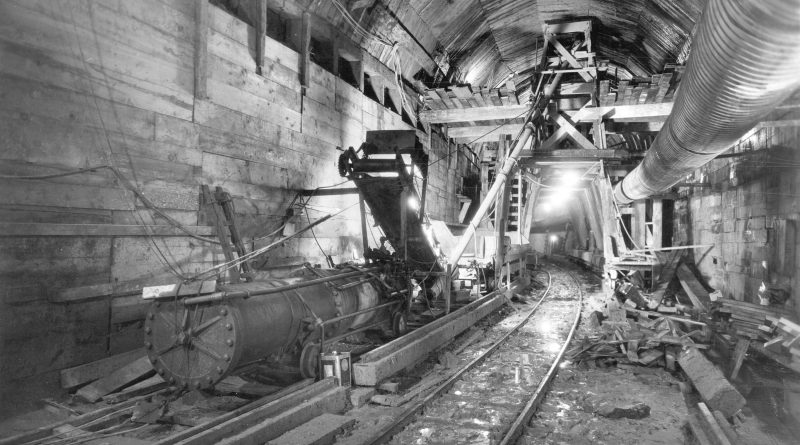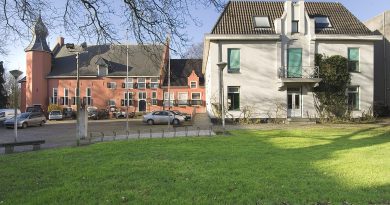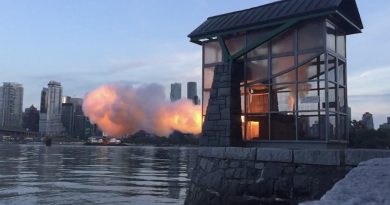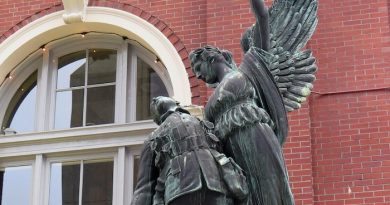The SkyTrain Tunnel
At midnight on July 16, 1933 all trains of the Canadian Pacific Railway—which had been running at street level through downtown Vancouver for decades, infuriating motorists—came off the city’s busy streets and switched to a new tunnel. The railway would use the 1,396-metre-long (4,579 feet) tunnel for nearly 50 years. Today it’s used by SkyTrain.
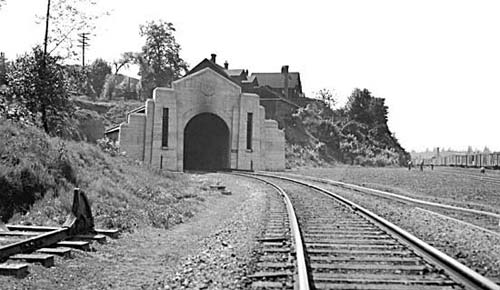
Vancouver City Archives photo: A21787
The CPR’s trains used to regularly tie up street traffic on Alexander, Columbia, Cordova, Hastings, Pender and Carrall in getting from the waterfront station to the railway’s False Creek yards. Downtown traffic would come to a standstill as trains often blocked all six streets simultaneously for up to 20 minutes. By the early 1930s a decision was made to build an alternate rail route to solve the traffic problem. That alternate route included a tunnel under what is downtown Vancouver today.
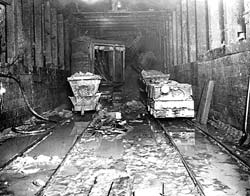
Construction on the tunnel began in January 1931 and was completed in July 1933. Shaped roughly like an elongated ‘S’ curve, it started from the CPR’s main line just west of the station under Thurlow Street, up to Dunsmuir and along to Cambie where it cut under Larwill Park—now a big parking lot at the southeast corner of Dunsmuir and Cambie—and came out near the western abutment of the Georgia Viaduct. It was built by Northern Construction Co. and J.W. Stewart, and cost $1.6 million.
The tunnel worms its way through the Vancouver underground from 18 to 24 metres below the surface, although in some places—Dunsmuir and Richards for one—it’s just six metres below you. That’s why those of you working in that part of the downtown can sometimes feel the SkyTrains rumbling by beneath.
Today’s SkyTrain passengers, jammed onto rush hour trains, might have a hard time believing that between 1955 and 1979 Canada’s most luxurious passenger train passed through this very tunnel twice a day. It didn’t carry passengers, though . . . only crew. Every day The Canadian—with dome cars, dining car and sleeping cars from Montreal and Toronto—would arrive in the late morning at CPR’s Cordova Street station (called Waterfront Station since 1980). After passengers disembarked and luggage was removed, the train would then continue west with just the crew . . . going into the tunnel where it would slowly turn back toward the east, emerging at the tunnel’s east end. From there it would slowly trundle over to the Drake Street yards to be cleaned, serviced and readied for another trip back to the east. In the very early evening the empty train would come back from the yards and head into the station, ready again to receive eastbound passengers.
The chaps who built the tunnel did a good job. They started at the Georgia Viaduct end and headed northwest. Someone pinned a red handkerchief to the earth bank on the waterfront to show where the edge of the tunnel should be when they emerged at that end. The final series of blasts blew the handkerchief away, and the workmen came blinking out into the sunshine to discover they were less than the width of a hand off target.
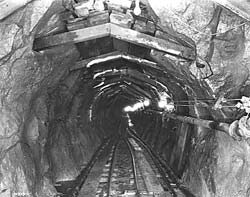
Now automobile, streetcar and bus passengers could travel through the area unimpeded. “And so,” wrote one reporter at the time, “thousands of workers had to think up a new lie to explain why they were late in the morning.”
By the end of 1982 the railway’s False Creek yards were empty. The stage was set to use the tunnel for daily commuters. SkyTrain groundbreaking was March 1, 1982. Single-tracked when the railway used it, the tunnel was extensively rebuilt for SkyTrain service. A concrete deck was built along most of its length to allow two tracks to be placed one above the other. Major excavations reached down to the tunnel’s south side where Granville and Burrard station platforms were later built.
The tunnel’s eastern end was also rebuilt. A short new section of tunnel was bored ending at the Stadium-Chinatown SkyTrain Station. “The old portal,” says transit buff Jim McGraw, “is to the south of where the SkyTrain comes out from under downtown to Stadium-Chinatown Station. The original portal, which is near Georgia, is now completely hidden by a new condo. You can’t see the other end either because Cordova has now been extended west and new buildings now completely hide it from public view.”
July 16, 2008 will mark the tunnel’s 75th birthday.
Our thanks to Jim McGraw for contributions to this article.

